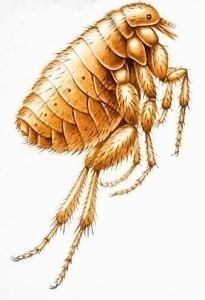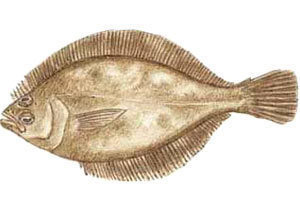How Big is a Flea?
If you think fleas are only common in dogs well you better think again.  If you wake up in the morning with reddish marks on your skin chances are that fleas just had a sample of you during the night. The fact is that fleas are common among many vertebrates, yes, that includes human beings.
If you wake up in the morning with reddish marks on your skin chances are that fleas just had a sample of you during the night. The fact is that fleas are common among many vertebrates, yes, that includes human beings.
Defining a Flea
Technically, a flea is an insect that has no wings. Its mouthparts are more adapted to piercing and suction, which makes things quite irritating for dogs and other furry pets. They are categorized as external parasites and live off the blood of birds and mammals. Some of the common species include dog fleas, cat fleas, moorhen fleas, human fleas, oriental rat fleas, and northern rat fleas.
Flea Sizes
Flea sizes can vary widely from one species to the other and how long they get to live off their victims. Flea sizes generally range from small dots that we're all familiar with to as huge as 0.06 of an inch or three to four millimeters. All fleas are generally big enough to be visible to the human eye. However, the longer they are allowed to live off their host they do tend to get a lot bigger.
Lifecycle
Other than understanding flea sizes, it is also important to know a flea's life cycle. These little pests definitely go through four stages in their life cycle from egg, larva, then pupa, and finally to an adult flea. Mother fleas usually lay eggs after feeding, which means they must feed on a hosts' blood before they are able to reproduce.
Fleas usually lay their eggs on their hosts. These eventually roll off to where the host usually sleeps or rests. Thus your bed or sofa can be a nifty little nesting ground for developing little pests. A flea's life cycle can be completed somewhere from two weeks up to as long as eight months. The length of time varies and will depend on their living conditions such as temperature, their species, food, and humidity.
Treatment
Your pets aren't the only ones that can possibly suffer from a flea infestation. Flea bites can be treated with topical creams and anti-histamines in case you get an allergic reaction. Effective treatments for your pets include the use of adulticides, insect development inhibitors, and insect growth inhibitors. Remember to consult your vet when treating your pets.
Take note that you will also have to treat your homes in case you have a flea infestation. Remember that every flea you find on your pet can mean more next generation pests still developing. Treatment may include the use of pesticides, insect growth regulators, and frequent vacuuming. Some folks use borax to get rid of house fleas but it has not been tested for pet safety.





